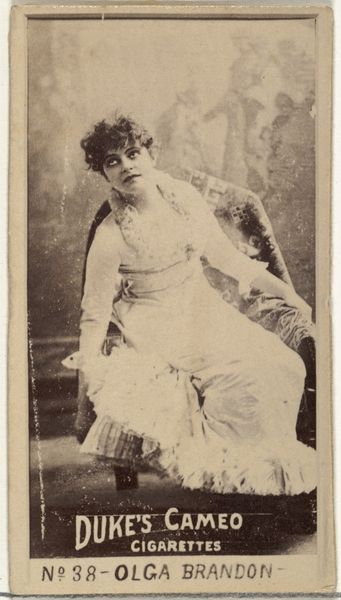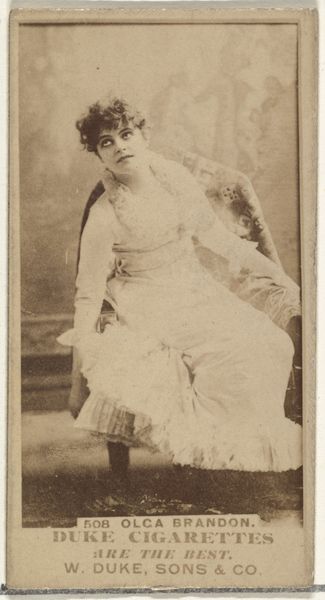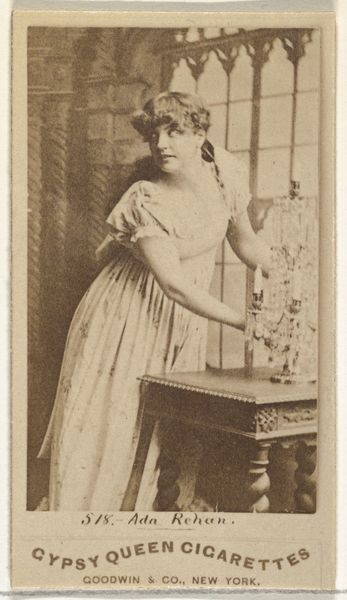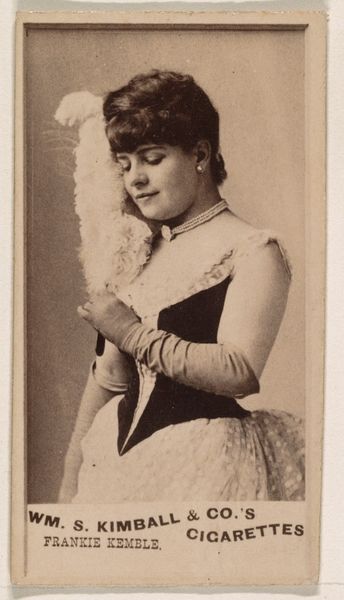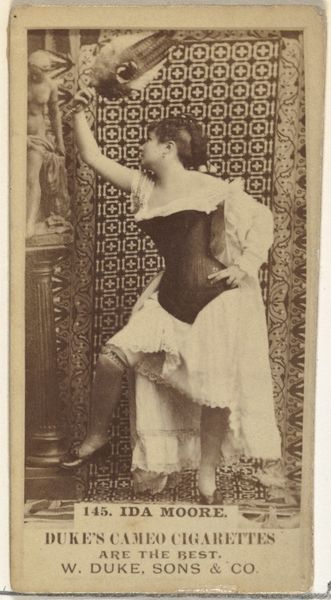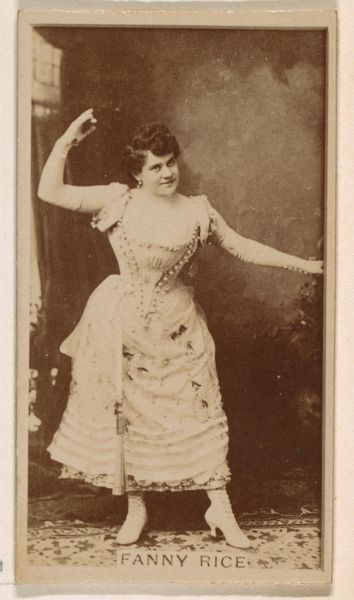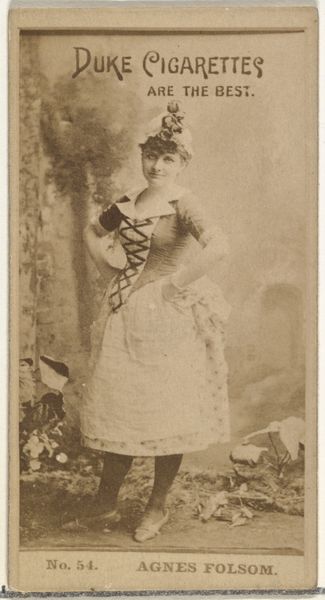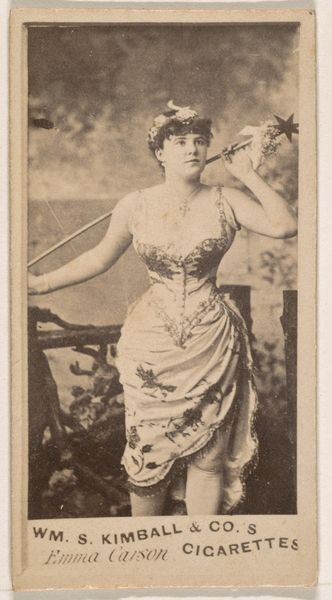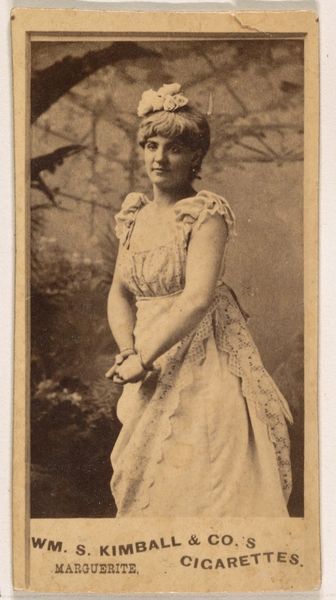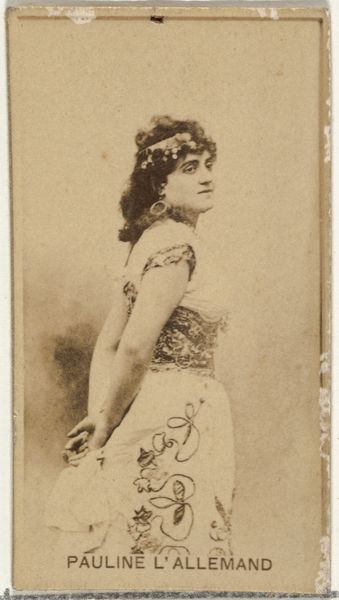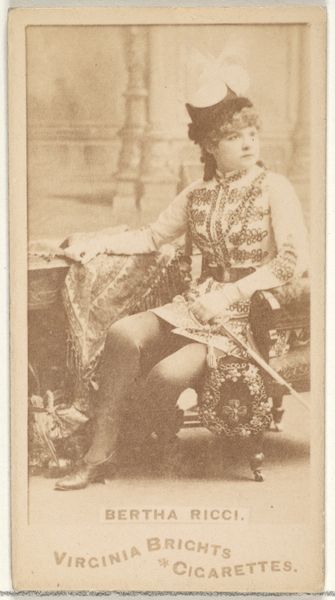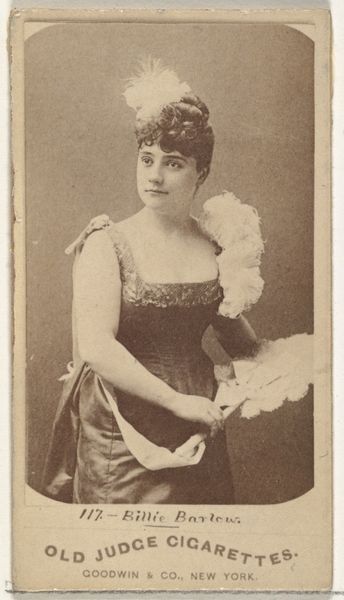
Card Number 631, Olga Brandon, from the Actors and Actresses series (N145-3) issued by Duke Sons & Co. to promote Cross Cut Cigarettes 1880s
0:00
0:00
drawing, print, daguerreotype, photography
#
portrait
#
drawing
# print
#
impressionism
#
daguerreotype
#
photography
#
historical photography
#
19th century
Dimensions: Sheet: 2 11/16 × 1 3/8 in. (6.8 × 3.5 cm)
Copyright: Public Domain
Curator: Ah, this image evokes such a bygone era. The Metropolitan Museum houses this captivating card from the 1880s. It's labeled "Card Number 631, Olga Brandon, from the Actors and Actresses series (N145-3)" – an advertisement distributed by Duke Sons & Co. to promote Cross Cut Cigarettes. Editor: My first impression is one of understated glamour. Despite its small scale, there’s something very poised about this photograph; her elegant posture and soft focus create a gentle and flattering portrait. Curator: Yes, note the tonal range; the image hovers between legibility and abstraction, her costume blending tonally with the vague figures looming in the backdrop. The compositional decision to compress figure and ground produces an ambiguous but unified whole. Editor: Indeed. The symbols suggest more than just commercial promotion. Olga Brandon, herself, is an interesting figure. Actors and actresses held significant cultural sway as interpreters of human experience— their images promising an emotional connection for the viewer. What stories does her expression invite? Curator: Interesting. If we decode the gaze itself, we find a deliberate theatricality—not exactly directed at the viewer, but carefully posed to emphasize certain qualities of character through artifice, as evidenced by the somewhat rigid symmetry of the sitter. Editor: Well, the cigarettes become symbolic too. The promise of entertainment and beauty associated with Brandon become aligned with the momentary pleasure, the brief spark of those Cross Cut cigarettes. It’s an interesting blend of aspirational advertising and the desire for fleeting experience. Curator: Precisely! That fusion illustrates how commercial strategies intersect with art forms—ultimately exploiting cultural symbols to drive consumer desire. What seems, on its surface, a trivial ephemera reflects deeper socio-economic imperatives of the period. Editor: Analyzing how period tastes intertwine with industry reveals fascinating aspects about popular culture, and indeed what traces of shared emotion linger beyond just the materials or product that these cards were produced to advertise. Curator: Very astute observation. It showcases how formalism and iconography work in concert.
Comments
No comments
Be the first to comment and join the conversation on the ultimate creative platform.
